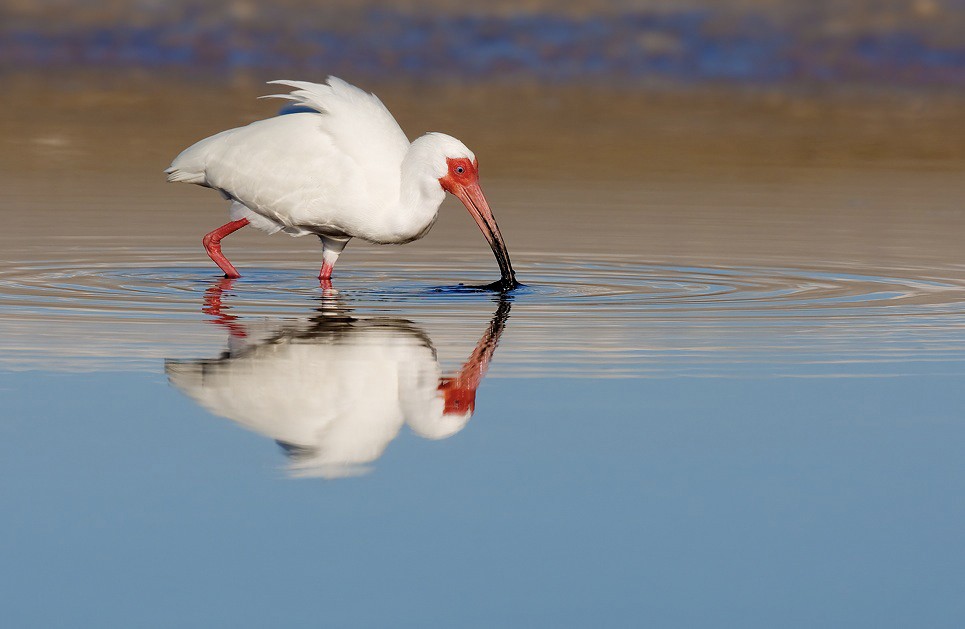White Ibis
A species of American White and Scarlet Ibises Scientific name : Eudocimus albus Genus : American White and Scarlet Ibises
White Ibis, A species of American White and Scarlet Ibises
Botanical name: Eudocimus albus
Genus: American White and Scarlet Ibises
Content
Description People often ask General Info
 Photo By William H. Majoros , used under CC-BY-SA-3.0 /Cropped and compressed from original
Photo By William H. Majoros , used under CC-BY-SA-3.0 /Cropped and compressed from original Description
The white Ibis is a medium-sized bird with beautiful white plumage that is a known wanderer. It makes a quiet grunting "croo croo" noise as it forages for food. Unfortunately, these birds have been heavily impacted by the pollutant methylmercury. In the Everglades high concentrations of methylmercury from human pollution have greatly impacted the mating behavior and mating frequency of the white Ibis.
Size
63 - 67 cm
Life Expectancy
16.3-27.6 years
Nest Placement
Tree
Feeding Habits
White Ibis engage in tactile foraging in wetlands, employing a probing technique with their bills to locate prey such as insects, crustaceans, fish, frogs, and other small animals. Predominantly they capture crayfish, earthworms, marine worms, and crabs. Once detected, prey is pinched and either consumed immediately or washed. Hard-shelled food is broken before ingestion, and claws are removed from crabs.
Habitat
White Ibis thrive in a variety of wetland habitats including swamps, mangroves, and freshwater marshes. Adapted to areas with shallow water and sparse vegetation, they are prevalent in coastal zones with brackish or saltwater marshes, and sometimes occupy grasslands near water. Additionally, they adapt to urban settings and typically nest in colonies close to freshwater for their offspring's nourishment.
Nest Behavior
White Ibis's nest construction lasts about 7 days, with ongoing maintenance. Males supply nesting material, while females mainly assemble the nest. Details on egg-laying and parental care are unspecified.
Nest Characteristics
White Ibis typically nests in forks of trees like elderberry or mangroves, or grass clumps, at 0.5–12 feet high. They form a roughly 10-inch-wide, 2–4-inch-tall platform nest with sticks collected by the male.
Dite type
Aquatic invertebrate eater
People often ask
General Info
Feeding Habits
Bird food type
Bird Feeder Type

Platform
Behavior
White Ibis are highly sociable and engage in collective activities from foraging to nesting. They leisurely peruse wetlands for food, displaying a probing and picking technique in their search for sustenance. Marked for their communal flights at noteworthy speeds, they also exhibit an unconventional plunging into roosts that betrays their otherwise elegant demeanor. Integral to their distinctiveness are elaborate courtship displays, encompassing synchronized flights and nuanced preening, aimed to entice mates. Notably, males may engage in polygamy via extra-pair couplings, aggressively defending their chosen mates and offspring. The species demonstrates biparental care in egg incubation and chick nurturing, though juveniles exhibit a lag in mastering foraging the periphery, dependent on parental care for extended periods.
Distribution Area
The American white ibis is most common in Florida, where over 30,000 have been counted in a single breeding colony. It also occurs throughout the Caribbean, on both coasts of Mexico (from Baja California southwards) and Central America, and as far south as Columbia and Venezuela. The non-breeding range extends further inland, reaching north to Virginia, and west to eastern Texas. 
Scientific Classification
Phylum
Chordates Class
Birds Order
Pelicans and Relatives Family
Ibises and spoonbills Species
White Ibis